New instructor tips
Latest news
- Welcome Business Mastery and The Ethics of Touch: Now Available!
- Applied Anatomy & Physiology for Manual Therapists, 2nd Edition: Explore now
- A Massage Therapist’s Guide to COVID-19 Digital Addendum: Get your complimentary digital addendum to A Massage Therapist’s Guide to Pathology
- Explore this new edition: A Massage Therapist’s Guide to Pathology, 7th edition
- New Trail Guide editions: Check them out!
- New title: Books of Discovery now publisher of Applied Anatomy & Physiology for Manual Therapists
- Instructor story: Trail Guide to the Body becomes part of the change for medical education in Albania
- New textbook title: Ruth Werner and A Massage Therapist’s Guide to Pathology join Books of Discovery
- New instructor tool: Customizable AOIN spreadsheet
Welcome Business Mastery and The Ethics of Touch to our lineup of best-selling textbooks!
Now available!

Business Mastery:
Takes students and practitioners from vision to sustained success
Business Masteryhelps hands-on therapy students and practitioners find their way to a financially rewarding and sustainable career that’s suited to their vision and strengths. Readers will find practical, innovative tools and tips on how to market their skills, work smarter, develop alliances through networking, fine tune their communication skills, and create a dynamic online presence.
The Ethics of Touch:
An ethical pathway to professional success and integrity
In this definitive work on ethics, Ben Benjamin and Cherie Sohnen-Moe directly address the difficult, confusing, and seldom discussed, but often troubling dilemmas confronting manual therapy practitioners. The Ethics of Touchpromotes a deep and personal exploration of these multilayered issues. Practitioners with a clear understanding of ethical behavior and professional communication skills are the ones who create and build successful practices. As premier textbooks in the field, Business Mastery and The Ethics of Touch should be in every manual therapy practitioner’s office.
Applied Anatomy & Physiology for Manual Therapists, 2nd Edition
We’ve enhanced a number of features in this new edition. Here are a few of them:
 New Unit Openers present a big-picture overview of the body systems covered and how they are interrelated.
New Unit Openers present a big-picture overview of the body systems covered and how they are interrelated.- New chapter-opening “Pre-learning” scenarios show students the connection between the body systems and our everyday lives.
- Thinking Beyond questions at the end of each chapter provide students with opportunities to apply the newly learned A&P content.
- Completely reviewed and updated content reflects the latest best practices.
A Massage Therapist’s Guide to COVID-19 Digital Addendum
Get your complimentary digital addendum to A Massage Therapist’s Guide to Pathology.
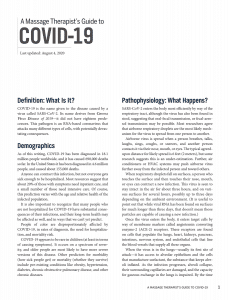
Massage therapists working with clients who have had COVID-19 confront new and unique treatment challenges. Focused on evidence-informed massage therapy, Ruth Werner’s digital addendum to A Massage Therapist’s Guide to Pathology prepares future practitioners to make choices that result in optimal outcomes for clients living with the health-related consequences of their infections.
Scope of COVID-19 Addendum
Ruth Werner’s original research includes interviews with some of the U.S.’s top infectious disease specialists, setting the standard for massage therapists’ COVID-19 pathology instruction. The addendum provides a comprehensive clinical and pathological examination of COVID-19:
-
-
-
-
-
-
- Definition: What Is It?
- Demographics
- Pathophysiology: What Happens?
- Complications
- Signs and Symptoms
- Treatment
- Questions for Clients Who Have Had COVID-19
-
-
-
-
-
Explore this new edition
A Massage Therapist’s Guide to Pathology, 7th edition
In her newest edition, Ruth Werner, BCTMB — a pioneer of pathology education in massage therapy — empowers students with critical thinking skills to design safe, effective, evidence-informed treatment plans.
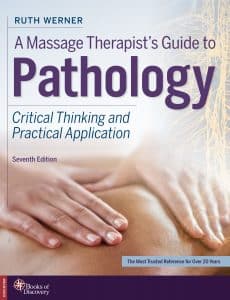 New features in the 7th edition.
New features in the 7th edition.
- Client Profiles relate course material to real-life situations, making pathology relevant for students.
- Critical Thinking, Practical Application Exercises let students apply pathology to the client profiles and engage in real-world learning.
- Apply What You Know Boxes include the benefits and risks of treatment, massage therapy accommodations, and current research.
- Revised Explore and Apply Questions at the end of each chapter delve into critical thinking steps.
- Completely Updated Research assists students in designing safe, effective, evidence-informed treatment plans.
New Trail Guide editions
Check them out!
 Trail Guide to the Body, 6th edition
Trail Guide to the Body, 6th edition
Featuring updated, full-color illustrations, chapter introductions, and case stories for powerfully effective ways to deliver surface anatomy and palpation lessons.
Trail Guide to Movement, 2nd edition
This fascinating journey into the world of kinesiology goes even deeper, with 15 pages of additional vital content.
Now at Books of Discovery
Applied Anatomy & Physiology for Manual Therapists
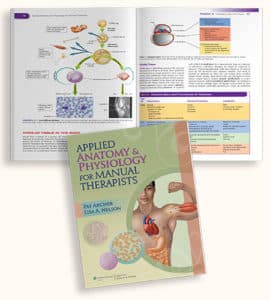 Books of Discovery, with a 20-year history as one of the most respected manual therapy publishers, has added to its list a premier anatomy and physiology (A&P) textbook — Applied Anatomy & Physiology for Manual Therapists, previously published by Lippincott Williams & Wilkins.
Books of Discovery, with a 20-year history as one of the most respected manual therapy publishers, has added to its list a premier anatomy and physiology (A&P) textbook — Applied Anatomy & Physiology for Manual Therapists, previously published by Lippincott Williams & Wilkins.
Originally published in 2013, this textbook engages students with easy-to-understand yet detailed A&P principles that specifically apply to students’ future bodywork careers.
Chapter discussions include the benefits, effects, indications, and contraindications for manual therapy treatments. Co-authors and learning experts Pat Archer, MS, AT ret, LMT, and Lisa Nelson, BA, AT/R, LMT, approach technical details with a focus on accuracy and interest, making content comprehensive and approachable for students.
Learn more about this textbook.
New instructor tip
Try walkin’ in my shoes
 Write different gait deviations on separate pieces of paper, and ask a student to choose one. That student then walks in the assigned gait to experience the feeling of the gait, muscles involved, and imbalances that exist. Then ask your class to guess the gait deviation the student was assigned.
Write different gait deviations on separate pieces of paper, and ask a student to choose one. That student then walks in the assigned gait to experience the feeling of the gait, muscles involved, and imbalances that exist. Then ask your class to guess the gait deviation the student was assigned.
This exercise can also be done in smaller groups: assign specific gait deviations to different groups and have each report their Walkin’ in My Shoes findings to the class.
New instructor tip
Deconstruct a sport activity
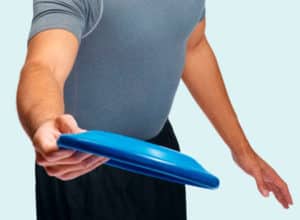 Bring to class several sport or exercise items such as a Frisbee, bat and ball, Hula Hoop, Hacky Sack, or baton. Ask students to work in pairs. Each pair selects an item and deconstructs the movements involved when using it. Have them share their findings with the class.
Bring to class several sport or exercise items such as a Frisbee, bat and ball, Hula Hoop, Hacky Sack, or baton. Ask students to work in pairs. Each pair selects an item and deconstructs the movements involved when using it. Have them share their findings with the class.
Some variations of this lesson can include asking your students to:
- Identify which muscles are used.
- Describe how the muscles are used.
- Compare required upper-body muscle movement to lower-body muscle movement.
- Explain the prime movers vs. synergists or antagonists.
Instructor story
Trail Guide to the Body becomes part of the change for medical education in Albania
Takes students beyond rote memorization to practicing and mastering palpation.
 “I wish you could see the students start to ‘think’ and try to figure out ‘function’ using their own bodies and the new textbooks. They aren’t just memorizing how to palpate muscles and bony structures, they’re visualizing it with the text and then actually practicing it,” says Kathy Scott, PT, DPT, an American physical therapy instructor working for the ABC Health Foundation, a not-for-profit organization striving to improve medical care in Albania.
“I wish you could see the students start to ‘think’ and try to figure out ‘function’ using their own bodies and the new textbooks. They aren’t just memorizing how to palpate muscles and bony structures, they’re visualizing it with the text and then actually practicing it,” says Kathy Scott, PT, DPT, an American physical therapy instructor working for the ABC Health Foundation, a not-for-profit organization striving to improve medical care in Albania.
New instructor tip
Pick apart a pushup
 Choose an exercise to deconstruct — for example, a pushup. Ask students to work in pairs or small groups to identify all the movements required when engaging in that exercise. Instruct them to:
Choose an exercise to deconstruct — for example, a pushup. Ask students to work in pairs or small groups to identify all the movements required when engaging in that exercise. Instruct them to:
- Describe how movements occur in the exercise.
- List the order of muscle actions throughout the exercise.
- Ask them to try using “eccentrically speaking,” where the focus is on eccentric contraction instead of concentric.
Consider giving a prize to the pair of students who have the highest number of correct answers.
Available now
A Massage Therapist’s Guide to Pathology
Ruth Werner, and her iconic book, have joined our publishing family!
 There’s nothing quite like finding that perfect textbook to augment our product line and accommodate our rapidly growing customer base. That’s why we’ve brought this revered, best-selling text into our family.
There’s nothing quite like finding that perfect textbook to augment our product line and accommodate our rapidly growing customer base. That’s why we’ve brought this revered, best-selling text into our family.
A cornerstone educational resource of many massage therapy programs and already in its 6th edition, A Massage Therapist’s Guide to Pathology is a comprehensive, visually appealing, and highly respected textbook on pathologies. Organized by body system, the text contains detailed information on the etiology, signs, symptoms, and treatment of more than 500 diseases and conditions. It also helps students discover how massage therapy can positively impact the healing process.
Here are some of our favorite features:
- Case histories in which people living and coping with many of the diseases and conditions share their stories, drawing a real-world connection between the classroom and the clinic.
- Clear illustrations and friendly, accessible content to capture students’ attention and make challenging concepts easier to grasp.
- Tables at the end of each disease description that summarize the benefits, risks, and options for massage therapy.
- A research literacy appendix addressing the need for evidence-based massage therapy.
- Compare-and-contrast charts that list similar conditions side-by-side, helping students discern the differences.
- Access to a host of games, exercises, quizzes, videos, and animations, all developed or selected by the author.
New instructor resource
Teach AOIN topics your way.
Customizable Action, Origin, Insertion, and Nerve Innervation Spreadsheet

Do you sometimes need more, or less, Action, Origin, Insertion, and Nerve Innervation (AOIN) material than what’s printed in Trail Guide to the Body? With the new customizable AOIN spreadsheet, it’s easier than ever to teach AOIN information to your standards.
Expand on an AOIN topic. Or, fill in the gaps. You can even use your customized spreadsheet to create study guides for your students. Because no one knows precisely what your students need to learn better than you.
- Customize materials quickly in a Microsoft Excel-based spreadsheet.
- Teach students only the specific AOIN information they need.
- Build customized study sheets for your students.
Now available for instructors who require Trail Guide to the Body for their courses.
Instructor tip
Adding some clarity to the deltoid.

Wondering the best ways to help students understand the deltoid?
Chances are, your students are unfamiliar with the concept of synergists and antagonists. So, before you start explaining the deltoid ask, “How could the deltoid possibly move the shoulder in so many different directions?”
Next, engage them visually by using a skeleton as a prop. You might want to say, “Imagine there’s a little guy standing here on the clavicle. He throws a rope down and hooks it on to the deltoid tuberosity. As he pulls, the humerus swings up (flexing and medially rotating at the glenohumeral joint).”
Instructor tip
Taking the mystery out of the levator scapula.
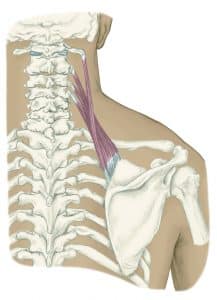 The twisting, three-dimensional aspect of the levator scapula can be confusing for students. To make it easier to understand, consider drawing the belly of the levator scapula on a shirtless model. This can help them visualize how it’s on both the posterior and lateral sides of the neck. Then move the model’s head in various positions, so students can see how the muscle shortens and lengthens.
The twisting, three-dimensional aspect of the levator scapula can be confusing for students. To make it easier to understand, consider drawing the belly of the levator scapula on a shirtless model. This can help them visualize how it’s on both the posterior and lateral sides of the neck. Then move the model’s head in various positions, so students can see how the muscle shortens and lengthens.
Available now
Business Mastery, 5th edition
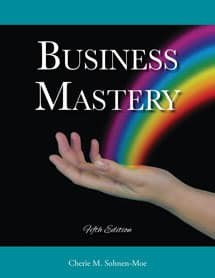 Business Mastery, 5th edition, helps hands-on therapy students and practitioners find their way to a financially rewarding and sustainable career that’s suited to their vision and strengths. This time-tested textbook provides the tools to succeed on any path, whether working as an independent therapist or as a practitioner at a clinic or franchise. Readers will find practical, innovative tools and tips on how to market their skills, work smarter, develop alliances through networking, fine tune their communication skills, and create a dynamic online presence. As a premier textbook in the field, Business Mastery is used in hundreds of hands-on therapy schools worldwide.
Business Mastery, 5th edition, helps hands-on therapy students and practitioners find their way to a financially rewarding and sustainable career that’s suited to their vision and strengths. This time-tested textbook provides the tools to succeed on any path, whether working as an independent therapist or as a practitioner at a clinic or franchise. Readers will find practical, innovative tools and tips on how to market their skills, work smarter, develop alliances through networking, fine tune their communication skills, and create a dynamic online presence. As a premier textbook in the field, Business Mastery is used in hundreds of hands-on therapy schools worldwide.
Available now
The Ethics of Touch, 3rd edition
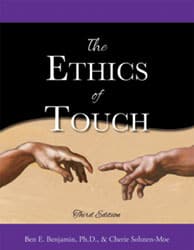 In this definitive work on ethics, Ben Benjamin and Cherie Sohnen-Moe directly address the difficult, confusing, and seldom discussed, but often troubling dilemmas confronting manual therapy practitioners. The Ethics of Touch, 3rd edition, promotes a deep and personal exploration of these multilayered issues. By identifying clear principles and naming specific resources, Ben and Cherie have provided an essential guide that supports and inspires both students and seasoned practitioners. Through reflective exercises, insight-promoting questions, and stories straight from the treatment room, students are led on a personal journey where they discover and internalize the highest professional standards and outline practical steps to meet them. Practitioners with a clear understanding of ethical behavior and professional communication skills are the ones who create and build successful practices. This book belongs in the office of every manual therapy practitioner.
In this definitive work on ethics, Ben Benjamin and Cherie Sohnen-Moe directly address the difficult, confusing, and seldom discussed, but often troubling dilemmas confronting manual therapy practitioners. The Ethics of Touch, 3rd edition, promotes a deep and personal exploration of these multilayered issues. By identifying clear principles and naming specific resources, Ben and Cherie have provided an essential guide that supports and inspires both students and seasoned practitioners. Through reflective exercises, insight-promoting questions, and stories straight from the treatment room, students are led on a personal journey where they discover and internalize the highest professional standards and outline practical steps to meet them. Practitioners with a clear understanding of ethical behavior and professional communication skills are the ones who create and build successful practices. This book belongs in the office of every manual therapy practitioner.
